View in other NatureServe Network Field Guides
NatureServe
Montana
Utah
Wyoming
Idaho
Wisconsin
British Columbia
South Carolina
Yukon
California
New York
Mojave Brickellbush - Brickellia oblongifolia
State Rank Reason (see State Rank above)
Few collections known for Montana. Only known extant occurrences are all near Melrose. The current status of one historical occurrence near Wilsall is unknown.
Invasive weeds do not apear to be a threat at this time and the rocky, sparsely-vegetated slopes that the species occupies are not generally subject to human impacts. Livestock grazing may be negatively impacting the species at one site. Updated population and site data are needed for the known occurrences. Other occurrences of the species are likely to be found in Montana.
General Description
Glandular-puberulent herb or subshrub, 1-6 dm tall, generally with many stems from near the base. Leaves all cauline, mostly sessile, alternate or occasionally opposite to subopposite, entire or nearly so, lance-linear to oblong or elliptic, 1-4 cm long and up to 15 mm wide. Leaves mostly 2-8 times as long as wide. Heads terminating the branches or subcorymbosely clustered and relatively large. The involucres 10-20 mm high with acute to acuminate bracts. Flowers ochroleucous, numerous with about 40-50 flowers in each head. Achenes 4.5-6 mm long.
Diagnostic Characteristics
Similar to Brickellia grandiflora, which differs in having broad, toothed leaves. B. eupatorioides closely resembles B. oblongifolia, but has toothed leaves and feathery (plumose) pappus bristles on the top of the fruit. Only the typic variety of B. oblongifolia is known in Montana.
Species Range
Montana Range
Range Descriptions
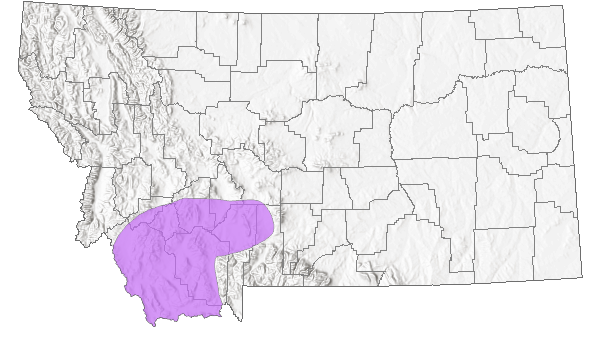
 Native
Native
Range Comments
BC south to CA, AZ and NM (Lesica et al. 2012. Manual of Montana Vascular Plants. BRIT Press. Fort Worth, TX).
Observations in Montana Natural Heritage Program Database
Number of Observations: 13
(Click on the following maps and charts to see full sized version)
Map Help and Descriptions
Relative Density
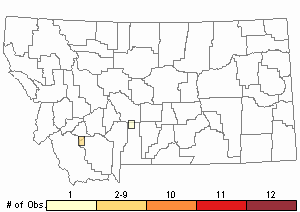
Recency
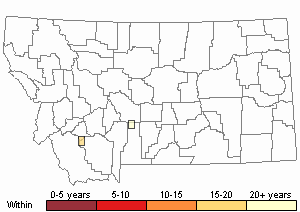
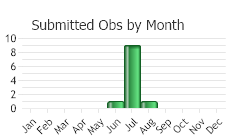
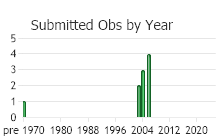
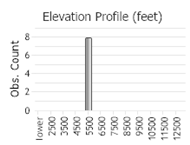 (Observations spanning multiple months or years are excluded from time charts)
(Observations spanning multiple months or years are excluded from time charts)
Habitat
Grows on rock outcrops, talus and scree, and on dry, sparsely-vegetated, southerly slopes.
Ecological Systems Associated with this Species
- Commonly Associated with these Ecological Systems
Forest and Woodland Systems
Shrubland, Steppe and Savanna Systems
- Occasionally Associated with these Ecological Systems
Shrubland, Steppe and Savanna Systems
Stewardship Responsibility
Threats or Limiting Factors
STATE THREAT SCORE REASON
Reported threats to Montana's population of Mojave Brickellbush concern a population located where concentrated off-highway vehicle (OHV) activity is the dominant land use (MTNHP Threat Assessment 2021). The proportion of the population exposed to negative impacts may range from small to large as the current status of historic populations are not known.
References
- Literature Cited AboveLegend:
 View Online Publication
View Online Publication Lesica, P., M.T. Lavin, and P.F. Stickney. 2012. Manual of Montana Vascular Plants. Fort Worth, TX: BRIT Press. viii + 771 p.
Lesica, P., M.T. Lavin, and P.F. Stickney. 2012. Manual of Montana Vascular Plants. Fort Worth, TX: BRIT Press. viii + 771 p. MTNHP Threat Assessment. 2021. State Threat Score Assignment and Assessment of Reported Threats from 2006 to 2021 for State-listed Vascular Plants. Botany Program, Montana Natural Heritage Program, Helena, Montana.
MTNHP Threat Assessment. 2021. State Threat Score Assignment and Assessment of Reported Threats from 2006 to 2021 for State-listed Vascular Plants. Botany Program, Montana Natural Heritage Program, Helena, Montana.
- Additional ReferencesLegend:
 View Online Publication
View Online Publication
Do you know of a citation we're missing? Lesica, P., M.T. Lavin, and P.F. Stickney. 2022. Manual of Montana Vascular Plants, Second Edition. Fort Worth, TX: BRIT Press. viii + 779 p.
Lesica, P., M.T. Lavin, and P.F. Stickney. 2022. Manual of Montana Vascular Plants, Second Edition. Fort Worth, TX: BRIT Press. viii + 779 p.
- Web Search Engines for Articles on "Mojave Brickellbush"





